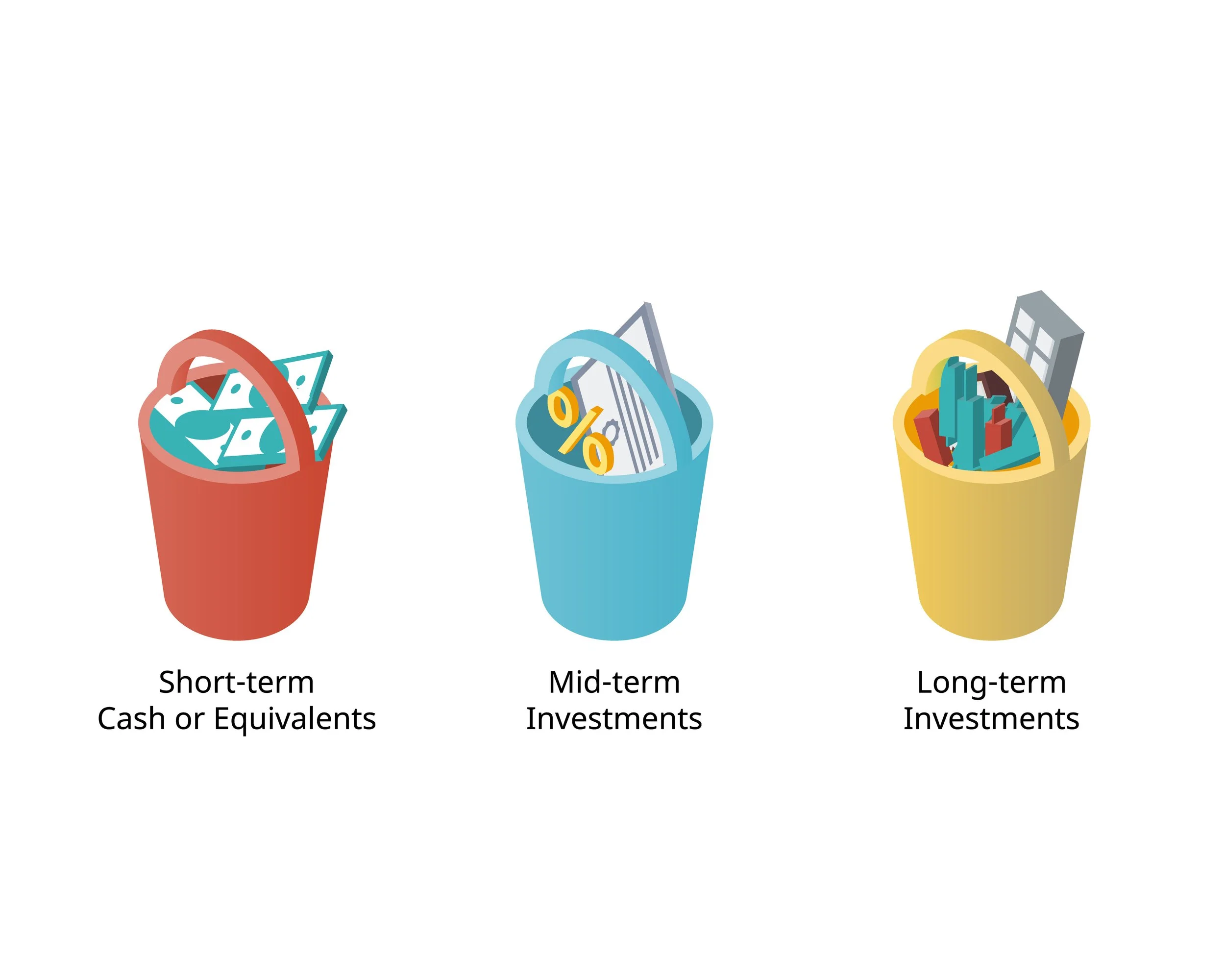The Bucket Strategy: Turning Investments Into Income
When building wealth through saving and investing, it's crucial to have a clear vision of how your accumulated assets will support you in retirement. The ultimate goal for many is to transform their investment portfolio into a reliable source of annual income, much like the regular paychecks received during their working years. To achieve this, a strategic and organized approach known as the Bucket Strategy can be very effective.
The Bucket Strategy is a methodical way of structuring your investment portfolio to generate income during retirement. It involves compartmentalizing your assets into three distinct buckets, each serving a specific purpose in the income generation process.
Bucket One: The Short-Term Bucket (Cash or Cash Equivalents)
The first bucket is your financial safety net, designed to address your immediate financial needs for the upcoming year and any unexpected emergencies. All income required for the next 12 months, along with your emergency fund, is held in and spent from this bucket. Given the short-term nature of these funds, this bucket should consist of cash or cash equivalents.
Bucket Two: The Mid-Term Bucket (Bonds or Other Fixed-Income Instruments)
The second bucket is designed to provide income for the medium term. This is where your personal risk tolerance comes into play. You can structure this bucket to cover your income needs for years 2-6 (a 5-year timeframe) or extend it to years 2-9 (an 8-year timeframe).
A shorter timeframe (Years 2-6) is generally suitable for those with a higher risk tolerance, as it allows more of your overall portfolio to be invested for long-term growth in Bucket Three.
A longer timeframe (Years 2-9) is a more conservative approach, as it secures more years of income in relatively stable assets, insulating a larger portion of your funds from short-term market volatility.
To fund this bucket, you would calculate the Net Present Value (NPV) of the total income needed for your chosen timeframe (5 or 8 years), adjusted for inflation. This lump sum is typically invested in conservative assets like bonds or other fixed-income instruments.
Bucket Three: The Long-Term Bucket (Stocks or Other Growth-Oriented Assets)
The third bucket is focused on long-term growth and capital appreciation. The starting point for this bucket depends on the timeframe you selected for Bucket Two. If Bucket Two covers years 2-6, this bucket is for year 7 and beyond. If Bucket Two covers years 2-9, this is for year 10 and beyond. The primary aim of this bucket is to outpace inflation and grow your capital to replenish the other buckets over the long run. It will primarily consist of stocks and other growth-oriented assets.
Implementation
The strategy is dynamic. At the beginning of each year, you will rebalance your portfolio. First, you replenish the short-term bucket to cover the next year's income needs by selling assets from the mid-term bucket. Then, you replenish the mid-term bucket to its target duration by harvesting gains from the growth in the long-term bucket. This annual process ensures your overall asset allocation stays aligned with your risk tolerance and retirement goals.
By employing the Bucket Strategy, you create a structured and dynamic approach to retirement income. It enables you to navigate the complexities of market fluctuations while ensuring a consistent and reliable income stream. Regular reviews and adjustments ensure your strategy remains aligned with your evolving needs and provides the psychological fortitude to withstand market volatility, knowing that your near- and mid-term income needs are segmented from market risk while your remaining funds are invested for long-term growth.
